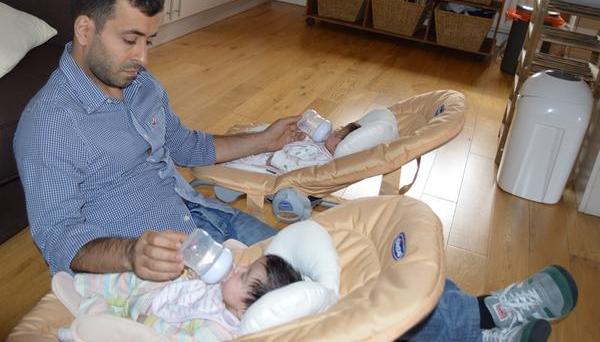Feeding your babies is very much a personal choice and you should do what works best for you, your babies and your family situation. One option is to bottle feed with formula. This option is more expensive than other feeding options, but for some families this is the option which works best for them.

Making up a bottle of formula
To reduce the risk of infection, current guidelines for preparing infant formula are that each feed should be made up at the time it is needed and that the water should be no less than 70°c (within 30 minutes of a kettle boiling will ensure that the water is at or above this temperature) when the formula powder is added. When out and about with your babies, vacuum flasks can keep water above 70°c for several hours. The powder and water can then be added to the babies’ bottles when the feed is required. Rather than shaking the bottle straight away to mix the formula powder and water, roll the bottle in your hands first to avoid the powder getting into the top of the teat, then shake thoroughly.
You should always use the scoop provided with the infant formula powder and add the exact number of scoops to water ratio as instructed on the formula tub label. Then you should cool the feed to feeding temperature by running the bottle under the cold tap. Test the temperature by dropping a small amount of milk on your wrist (don’t touch your skin with the teat). You will know that it is at the right temperature if you can’t really feel the milk on your wrist meaning that it is neither too hot or too cold. If when you take the lid off the bottle the milk sprays everywhere this is a sure way to know that the milk is far too hot!
Making a formula feed and then storing it, or not cleaning and sterilising bottles properly can increase the chance of a baby becoming ill:
- Follow the instructions for cleaning and sterilising bottles carefully
- Discard any feed that has not been used within two hours
Feeding provides a great opportunity to spend some one to one time with your babies, it helps to get feeding off to a good start and also gives you an opportunity to get to know each other and start to build a lovely relationship. Every baby is different and taking some time with him/her during feeding helps you get to know their individual needs and feeding patterns.
We have information about positions and tips for bottle feeding your twins, triplet or more.
-strap.svg)